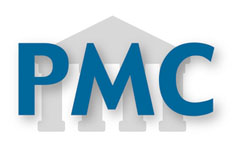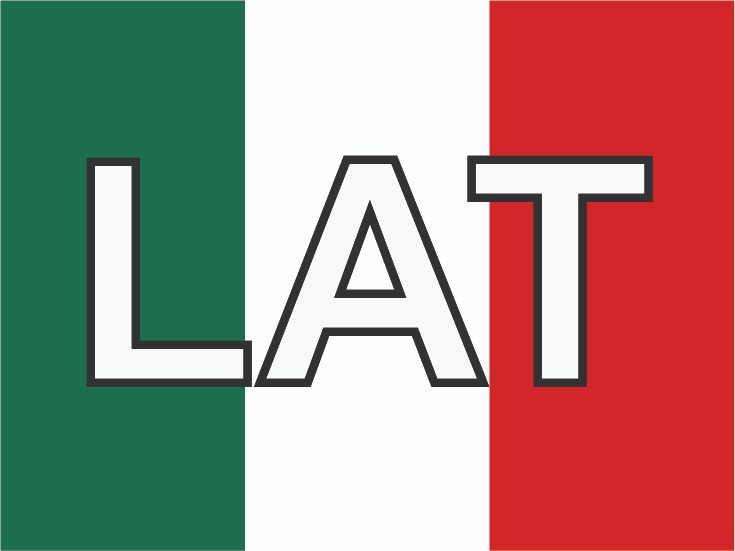Variations in the anatomical relationship between the common carotid artery and the internal jugular vein: An ultrasonographic study
Abstract
Introduction:The internal jugular vein locates anterior or anterolateral to the common carotid artery in two-thirds of the subjects studied by ultrasound when the head is in a rotated position.
Aim:To identify variables associated with the anterior location of the internal jugular vein.
Methods:Ultrasound examinations were performed with the patients in the supine position, with the head rotated to the opposite side. The proximal third of the neck was visualized transversely with a 7.5-mHz transducer. The relationship between the vessels was described in accordance with the proportion of the artery overlapped by the vein. Univariate comparisons and a multivariate analysis of potential variables that may affect the anatomic relationships were performed.
Results:Seventy-eight patients were included, 44 of whom were men. The patients' ages ranged from 17 to 90 years (median 64.0, interquartile range 41-73). The right and left sides were studied 75 and 73 times, respectively. The vein was located lateral to the artery in 24.3% (95%CI= 17.4-32.2) of the studies, anterolateral in 33.8% (95%CI= 26.2-41.4) and anterior in 41.9% (95%CI= 33.9-49.8). The multivariate analysis identified age group (OR= 3.7, 95% CI 2.1-6.4) and, less significantly, the left side (OR= 1.7, 95%CI= 0.8-3.5) and male gender (OR= 1.2, 95%CI= 0.6-2.7) as variables associated with the anterior position of the vein.
Conclusión:The anterior position of the internal jugular vein relative to the common carotid artery increases gradually with age. Additionally, left-sided localization and male sex further increased the probability of an anterior position.
Authors
Downloads
References
Gibbs FJ, Murphy MC. Ultrasound guidance for central venous catheter placement. Hospital Physician. 2006; 42(3): 23–31.
Wu SY, Ling Q, Cao LH, Wang J, Xu MX, Zeng WA. Real-time two-dimensional ultrasound guidance for central venous cannulation: a meta-analysis. Anesthesiology. 2013; 118(2): 361–75.
Eisen LA, Narasimhan M, Berger JS, Mayo PH, Rosen MJ, Schneider RF. Mechanical complications of central venous catheters. J Intensive Care Med. 2006; 21(1): 40–6.
Schummer W. Catheter-induced cardiac tamponade a preventable complication. Anesth Analg. 2011; 113(6): 1522.
Hind D, Calvert N, McWilliams R, Davidson A, Paisley S, Beverley C, et al. Ultrasonic locating devices for central venous cannulation: meta-analysis. BMJ. 2003; 327(7411): 361.
Wang DC, Klatzky R, Wu B, Weller G, Sampson AR, Stetten GD. Fully automated common carotid artery and internal jugular vein identification and tracking using B-mode ultrasound. IEEE Trans Biomed Eng. 2009; 56(6): 1691–9.
Denys BG, Uretsky BF. Anatomical variations of internal jugular vein location: impact on central venous access. Critical Care Med. 1991; 19(12): 1516–9.
Hameedullah, Rauf MA, Khan FH. Anatomical variations of internal jugular vein as seen by "Site Rite II" ultrasound machine--an initial experience in Pakistani population. J Pak Med Assoc. 2001; 51(3): 105–9.
Troianos CA, Kuwik RJ, Pasqual JR, Lim AJ, Odasso DP. Internal jugular vein and carotid artery anatomic relation as determined by ultrasonography. Anesthesiology. 1996; 85(1): 43–8.
Turba UC, Uflacker R, Hannegan C, Selby JB. Anatomic relationship of the internal jugular vein and the common carotid artery applied to percutaneous transjugular procedures. Cardiovasc Intervent Radiol. 2005; 28(3): 303–6.
Sibai AN, Loutfi E, Itani M, Baraka A. Ultrasound evaluation of the anatomical characteristics of the internal jugular vein and carotid artery--facilitation of internal jugular vein cannulation. Middle East J Anesthesiol. 2008; 19(6): 1305–20.
Bailey PL, Whitaker EE, Palmer LS, Glance LG. The accuracy of the central landmark used for central venous catheterization of the internal jugular vein. Anesth Analg. 2006; 102(5): 1327–32.
García A, Umaña M, Castillo JL, Bustamante L, Martínez JS. Estudio ecográfico de las relaciones anatómicas de la arteria carótida común y la vena yugular interna. Rev Colomb Cir. 2012; 27(S): 24.
Feller-Kopman D. Ultrasound-guided internal jugular access: a proposed standardized approach and implications for training and practice. Chest. 2007; 132(1): 302–9.
Gwak MJ, Park JY, Suk EH, Kim DH. Effects of head rotation on the right internal jugular vein in infants and young children. Anaesthesia. 2010; 65(3): 272–6.
Maecken T, Marcon C, Bomas S, Zenz M, Grau T. Relationship of the internal jugular vein to the common carotid artery: implications for ultrasound-guided vascular access. European J Anaesthesiol. 2011; 28(5): 351–5.
Qin XH, Zhang H, Mi WD. Anatomic relationship of the internal jugular vein and the common carotid artery in Chinese people. Chin Med J (Engl) 2010; 123(22): 3226–30.
Arai T, Matsuda Y, Koizuka K, Yasuoka A. Rotation of the head might not be recommended for internal jugular puncture in infants and children. Paediatr Anaesth. 2009; 19(9): 844–7.
Caridi JG, Hawkins IF Jr , Wiechmann BN, Pevarski DJ, Tonkin JC. Sonographic guidance when using the right internal jugular vein for central vein access. AJR Am J Roentgenol. 1998; 171(5): 1259–63.
Hong JY, Koo BN, Kim WO, Choi E, Kil HK. Effect of head rotation on overlap and relative position of internal jugular vein to carotid artery in infants and childrena study of the anatomy using ultrasonography. J Crit Care. 2010; 25(2): 360.e9–360.e13.
Lin BS, Kong CW, Tarng DC, Huang TP, Tang GJ. Anatomical variation of the internal jugular vein and its impact on temporary haemodialysis vascular access: an ultrasonographic survey in uraemic patients. Nephrol Dial Transplant. 1998; 13(1): 134–8.
Mallinson C, Bennett J, Hodgson P, Petros AJ. Position of the internal jugular vein in children. A study of the anatomy using ultrasonography. Paediatr Anaesth. 1999; 9(2): 111–4.
Ishizuka M, Nagata H, Takagi K, Kubota K. Right internal jugular vein is recommended for central venous catheterization. J Invest Surg. 2010; 23(2): 110–4.
Ministerio de Salud . Resolución 8430: Normas científicas, técnicas y administrativas para la investigación en salud. Colombia: 1993.
Lieberman JA, Williams KA, Rosenberg AL. Optimal head rotation for internal jugular vein cannulation when relying on external landmarks. Anesth Analg. 2004; 99(4): 982–8.
Wang R, Snoey ER, Clements RC, Hern HG, Price D. Effect of head rotation on vascular anatomy of the neck: an ultrasound study. J Emerg Med. 2006; 31(3): 283–6.
Lorchirachoonkul T, Ti LK, Manohara S, Lye ST, Tan SA, Shen L, et al. Anatomical variations of the internal jugular vein: implications for successful cannulation and risk of carotid artery puncture. Singapore Med J. 2012; 53(5): 325–8.
Shoja MM, Ardalan MR, Tubbs RS, Loukas M, Vahedinia S, Jabbary R, et al. The relationship between the internal jugular vein and common carotid artery in the carotid sheath: the effects of age, gender and side. Ann Anat. 2008; 190(4): 339–43.
Muhammad JK, Pugh ND, Boden L, Crean SJ, Fardy MJ. The effect of head rotation on the diameter of the internal jugular vein: implications for free tissue transfer. J Craniomaxillofac Surg. 2001; 29(4): 214–8.
Lichtenstein D, Saifi R, Augarde R, Prin S, Schmitt JM, Page B, et al. The Internal jugular veins are asymmetric. Usefulness of ultrasound before catheterization. Intensive Care Med. 2001; 27(1): 301–5.
Sulek CA, Blas ML, Lobato EB. A randomized study of left versus right internal jugular vein cannulation in adults. J Clin Anesth. 2000; 12(2): 142–5.
Gordon AC, Saliken JC, Johns D, Owen R, Gray RR. US-guided puncture of the internal jugular vein: complications and anatomic considerations. J Vasc Interv Radiol. 1998; 9(2): 333–8.
Copyright (c) 2015 Universidad del Valle

This work is licensed under a Creative Commons Attribution-NonCommercial 4.0 International License.
The copy rights of the articles published in Colombia Médica belong to the Universidad del Valle. The contents of the articles that appear in the Journal are exclusively the responsibility of the authors and do not necessarily reflect the opinions of the Editorial Committee of the Journal. It is allowed to reproduce the material published in Colombia Médica without prior authorization for non-commercial use




















